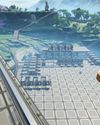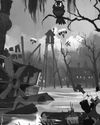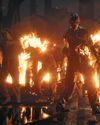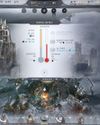
My tiny Cessna light aircraft is barreling down the terrifyingly short runway at Lukla, an airport nestled in the mountains of eastern Nepal that’s said to be one of the most dangerous in the world. The end of the runway approaches fast as I yank back on the yoke, but I’m not getting any lift. I resign myself to my fate, but half a second before I slam into the barrier separating Lukla from the misty void below, the little plane lurches into the air and suddenly I find myself soaring down a deep, vast Himalayan valley scattered with little fluffy clouds.
Ten minutes later I’m flying over New York City, a dense urban sprawl that stretches as far as the eye can see, sunlight glinting off the skyscrapers. Then I’m above my hometown of Glasgow, Scotland, in the thick of a torrential rainstorm. I can see the streets where I grew up below me. Then I’m somewhere over the Sahara. The Jökulsárlón glacier in Iceland. The lush valleys of New Zealand. Mount Fuji in Japan. Anywhere I can think of I can go, because in Microsoft Flight Simulator the entire world is literally at your fingertips.
It seems unbelievable, but as I spin a 3D globe around I realize that I can drop my plane anywhere on Earth and, after a short loading screen, start flying. This is possible because the game generates its world using satellite data pulled from Bing Maps. But you aren’t just flying over a flat texture: The engine takes this map data then intelligently fills it in with trees, water, buildings, famous landmarks, and even little details such as traffic on the roads. Elevation is rendered accurately too, resulting in towering mountain ranges and yawning valleys.
This story is from the {{IssueName}} edition of {{MagazineName}}.
Start your 7-day Magzter GOLD free trial to access thousands of curated premium stories, and 9,000+ magazines and newspapers.
Already a subscriber ? Sign In
This story is from the {{IssueName}} edition of {{MagazineName}}.
Start your 7-day Magzter GOLD free trial to access thousands of curated premium stories, and 9,000+ magazines and newspapers.
Already a subscriber? Sign In

"The War Within itself has kept me coming back most evenings too"
WORLD OF WARCRAFT remains my jailer, and I couldn't be more pleased about it

OK BUILDER
SATISFACTORY is the new titan in building and crafting games

HELL YES
DIABLO IV: VESSEL OF HATRED is a transformative expansion

MOUSE: PI FOR HIRE
This mouse wants to be more than just a gimmick

WINDBLOWN
Dead Cells dev's new roguelike has me afraid for my free time

NO MORE ROOM IN HELL 2
As the zombie horde surrounded me just moments after taking down my two remaining teammates, the writing was really on the wall. Armed with just a chef's knife, it was clear I stood no chance, but I was going down swinging, hoping for a miracle... it didn't come.

OWNED BY STEAM
VALVE cordially reminds you that your games aren't yours

CURSE OF THE AZURE BONDS
These classic games haven't aged badly, but I sure have.

DEEP FREEZE
Endure a blizzard of tough choices and rough consequences in FROSTPUNK 2

NEW HORIZONS
Building up REMNANT 2 outside the live service game grinder